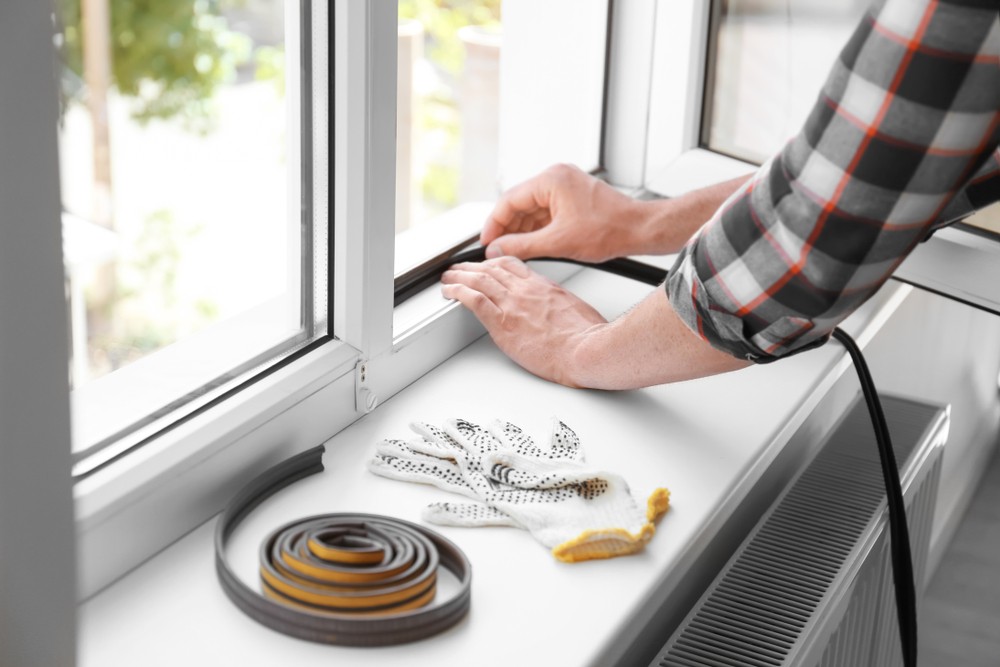As the cold months roll in, keeping your home warm without skyrocketing your energy bills becomes a priority for homeowners. Drafty homes are often the culprits of unwanted chills and increased heating costs. Fortunately, you don’t need to break the bank to seal those drafts effectively. With a few strategic changes and modest investments, you can ensure your home remains cozy and energy-efficient throughout the winter.
Seal Your Windows
Windows are a common source of heat loss. Even well-fitted windows can develop cracks over time, allowing cold air to seep in. To address this issue, consider the following:
- Weatherstripping: Apply foam or rubber weather stripping around the edges of windows. This method provides a tight seal to trap warm air indoors. It’s an inexpensive solution, typically costing around $10-$15 for enough material to cover several windows.
- Window Film: Use window insulating film as an additional barrier against cold air. This plastic sheet adheres to the inside surface of your windows, creating an insulating air pocket. Kits are common and affordable, often priced at about $20 for five standard windows.
- Caulking: Examine your windows for any gaps or cracks in the framing. With a caulking gun, apply silicone or acrylic latex caulk to fill these crevices. This seals inactive joints effectively and is a straightforward DIY job with caulk costing as little as $4 per tube.
Enhance Your Door Insulation
Doors, particularly those that lead outside, can also serve as significant sources of drafts. To enhance their insulation, consider:
- Draft Stoppers: Use or create draft stoppers to place at the base of your doors. These fabric cylinders filled with sand or other dense materials block chilly breezes effectively. They are simple to make at home or, alternatively, available for purchase for approximately $10-$20.
- Installing Sweeps: Door sweeps fit along the bottom of your exterior doors, creating a barrier to both air and moisture. They are easy to install and range from $10-$30, depending on the quality. Opt for a model with an adjustable height for the best fit.
- Replace or Add Weatherstripping: Just as with windows, using weatherstripping on doors can prevent unnecessary drafts. Magnetic weatherstripping is particularly effective for steel doors, while adhesive-backed foam tape works well for wood doors.
Treat Your Floors
Floors can contribute to overall household drafts, especially if they are hardwood or tiled. Adding some extra warmth here can make a significant difference.
- Area Rugs: Covering exposed floors with thick area rugs not only gives a cozy appearance but also provides an extra layer of insulation. Rugs help trap heat and prevent it from escaping through the floor. Rug prices vary, but you can often find quality options at discount stores or online for under $50.
- Rug Pads: Place a high-density rug pad underneath your area rug to enhance its insulating properties. These pads are primarily made of memory foam or felt, trapping additional air and keeping your feet warmer.
- Insulating Basement or Crawl Spaces: Focus on spaces beneath your living areas. Proper insulation in these areas prevents cold from seeping upwards. Consider spraying foam insulation or laying down insulating panels if drafts are major concerns. While this option might be costlier upfront, it provides significant energy savings over time.
Optimize Your Window Treatments
Curtains and blinds are not just decorative elements; they also play a role in insulation. Using window treatments wisely can help maintain warmth.
- Thermal Curtains: Invest in heavy, thermal-insulated curtains, which are specifically designed to prevent heat loss. These curtains often consist of multiple layers and can be found for around $25-$40 per panel. Ensure they fit snugly around your windows to maximize their effectiveness.
- Close Curtains at Night: When the sun goes down, so does the temperature. Closing curtains and blinds during the evening adds another layer between your warm interiors and the cold outside. Conversely, during the day, open them to let in natural sunlight, helping to heat your space naturally.
Utilize Smart Home Technology
Modern technology can offer intelligent solutions to make your home more energy-efficient without causing discomfort or high costs.
- Smart Thermostats: Unlike traditional thermostats, smart variants learn your routine and adjust heating patterns accordingly. Set them to lower heating at night or when nobody is home. Many models are available for under $150, and they often pay for themselves through reduced energy bills within a couple of seasons.
- Smart Sensors: Equip your home with smart temperature sensors. These synchronize with your thermostat to ensure different rooms maintain consistent and comfortable temperatures, preventing excess heating.
Perform Regular Maintenance
Consistent maintenance checks ensure your measures remain effective and your energy systems run efficiently.
- HVAC System Check: Schedule annual inspections to ensure your heating system is operating optimally. A well-maintained HVAC system uses less energy and maintains desired temperatures more effectively.
- Replace Filters: Dirty filters impede airflow and force your heating system to work harder than necessary. Replace them every 1-3 months depending on the manufacturer’s guidance and usage.
- Seal Ducts: Your heating ducts, if not sealed properly, can waste up to 30% of your heating energy. Use duct sealant or aluminum foil tape to tightly seal seams and connections.
Additional Considerations
Consider these additional techniques to further reduce drafts and enhance warmth economically:
- Insulate Your Attic: A significant amount of heat can escape through poorly insulated attics. Adding insulation here can have a profound impact on retaining warmth. While insulating materials vary, blown-in cellulose insulation provides cost-effective and high-performance results.
- Strategically Place Furniture: Position sofas, chairs, and large items away from windows and external walls. Doing so not only avoids the cold drafts but also aids in proper air circulation.
- DIY Reseal: Identify and reseal any gaps around electrical outlets, switches, and plumbing penetrations using inexpensive foam gaskets or expandable sealant foam.
Sealing drafts and retaining heat is not an elusive task reserved for home renovation experts; it’s a feasible goal for every homeowner through a combination of DIY efforts and strategic investments. By taking advantage of these simple yet effective measures, you can significantly reduce your heating costs while making your home a comfortably warm haven this winter. Consider which actions best fit your home and budget, and start preparing now to embrace the cold with confidence and comfort.



